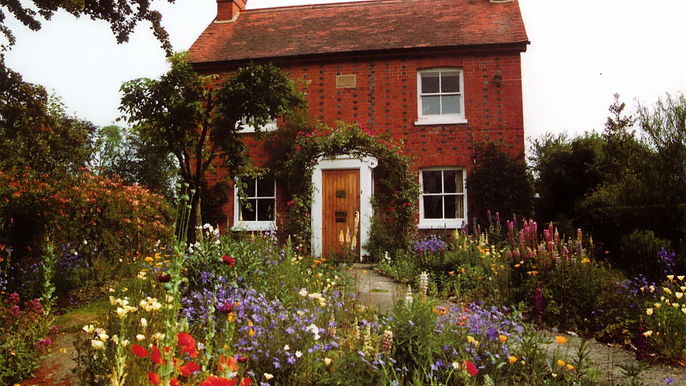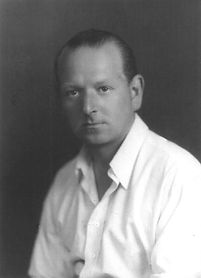A INCRÍVEL HISTÓRIA DOS FLORAIS DE BACH


Dr. Edward Bach
“Trate a pessoa, não a doença”.
O sonho de virar médico e encontrar a causa das doenças não foi interrompido pelo diagnostico de câncer terminal. Dr. Bach transpôs todos os obstáculos, mas acima de tudo trouxe luz a um sistema de cura simples, eficaz e acessível permitindo que a harmonia e a paz permeiem nossas vidas.
A história dos Florais de Bach, inventados há cerca de 80 anos não pode ser dissociada da comovente história de vida seu inventor, o médico inglês Dr. Edward Bach.
Nascido em Mosley uma pequena cidade do interior da Inglaterra, ele desde sua tenra infância sonhava em ser médico. Mas ele não pretendia ser apenas um médico, no seu íntimo, o que ele almejava era encontrar a causa das doenças. Um empreendimento que levou em frente por toda sua vida.
Bach estudou medicina no University College Hospital, em Londres, onde tornou-se cirurgião. Depois obteve seu DPH em Cambridge. Segundo seus biógrafos, ele era um estudante de medicina bastante peculiar, pois logo revelou ter mais interesse pelos pacientes do que por suas doenças: sentava-se ao lado do leito e os deixava falar.
Em 1913, ele assumiu um cargo no University College Hospital como o oficial médico de vítimas e em 1914 onde foi responsável por 400 leitos de guerra durante a Primeira Guerra Mundial. Foi quando ele começou a observar os efeitos do estresse e do trauma em relação ao potencial de recuperação de seus pacientes. Ele então descobriu que a verdadeira causa de sua doença eram as preocupações e emoções.
Apesar do sucesso de seu trabalho com a medicina ortodoxa, ele se sentia insatisfeito com a maneira como os médicos tradicionais se concentravam nas doenças e ignorando como os pacientes se sentiam. Em 1917, teve uma severa hemorragia e foi diagnosticado com um câncer de estomago em estado avançado, onde lhe foi comunicado que não teria mais que três meses de vida.
No entanto, com um homem extremamente positivo, reuniu suas forças e foi para o laboratório trabalhar. Passou a dedicar-se à pesquisa dia e noite. Além de não pensar na doença por ter a sua mente ocupada, voltar a trabalhar em função do objetivo da sua vida lhe trazia energia para prosseguir. Por isso, as pessoas notaram à janela uma luz acesa constantemente, olhavam-no trabalhar e comentavam que era a “luz que nunca se apaga”, devido a seu esforço e contínuo empenho. Em pouco tempo estava totalmente curado.
Ele passou a ser cada vez mais conhecido pelas suas descobertas no campo da bacteriologia. Trabalhou em tempo exclusivo para o "University College Hospital", e depois como bacteriologista do "London Homeopathic Hospital", permanecendo lá até 1922. Foi nesta situação que conheceu a Doutrina de Hahnemann, o pai da homeopatia e seu livro básico: o "Organon da Arte de Curar", escrito mais de cem anos antes do seu tempo. Então, descobriu a genialidade de Hahnemann, que curava guiado mais pelos sintomas mentais que pelos físicos. Dr. Edward Bach ficou fascinado em “curar o doente” e não “curar a doença”.
Apaixonado pelo trabalho de Hanneman, ele criou vacinas diluídas homeopaticamente e "potencializadas". Esta vacinas ainda hoje conhecidas como os sete nosódios de Bach.
A homeopatia e o uso de flores
Dr. Edward Bach, começou então a tentar substituir os nosódios por medicamentos preparados com plantas. Assim começou a utilizar no sistema de diluição e potencialização, duas flores que trouxe do País de Gales, em 1928. Estas plantas eram Impatiens e Mimulus. Os resultados foram muito positivos e encorajadores. Também neste mesmo período, começou a separar os indivíduos por grupos de semelhança de comportamento, como se “sofressem do mesmo problema”. Isso aconteceu depois que frequentara uma festa e ficou observando as pessoas, quando teve um insight e imaginou que deveria existir um medicamento que aliviasse este sofrimento comum a cada grupo de indivíduos.
A transição da homeopatia para os florais
Então, em 1930, resolveu deixar toda sua rendosa atividade em Londres, o consultório da rua Harley, os laboratórios e também todo o renome que conquistara para buscar na natureza este sistema de cura que tinha em mente e do qual sentia estar próximo.
Aos 44 anos, partiu para Gales sua terra natal deixando para trás a fama, o conforto e um lugar de destaque na sociedade médica em busca de realizar seu grande sonho. Antes de ir, queimou tudo que já tinha escrito e pesquizado deixando o resto do trabalho a ser concluído pelos colegas e auxiliares que trabalhavam com ele.
O Dr. Bach se convenceu de que a maioria das doenças humanas é causada por estados mentais negativos (medo, ciúme, desespero). Ele identificou 38 remédios - cada um baseado em uma flor nativa que, de acordo com suas pesquisas, aliviaria esses sentimentos negativos e assim restauraria a saúde.
Edward Bach morreu dormindo, em 27 de novembro de 1936, aos 50 anos de idade, em sua casa, em Mount Vernon. Hoje, é nesta mesma casa que funciona o Bach Centre, um centro de estudos à respeito dos florais de Bach, formação de terapeutas, onde também onde são feitas a colheita das flores e são preparadas conforme as técnicas desenvolvidas pelo próprio dr. Bach.
É la que são produzidas as “essências florais mãe”, de acordo com os rigorosos padrões de qualidade do Bach Centre, mantendo a tradição e em seguida, são enviadas para o Laboratório Nelson’s, para o envasamento dos 38 florais de Bach estoque e distribuição para o mundo todo. Os florais de Bach hoje estão presentes em 50 países, buscando a divulgar a luz de Edward, que nunca devera se apagar.

